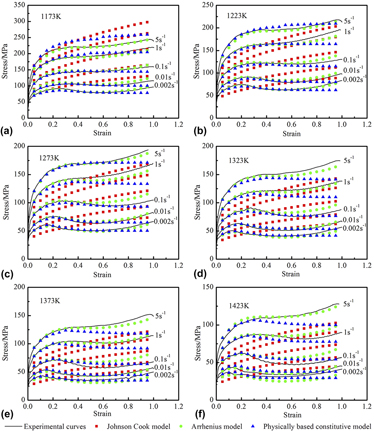Crossref Citations
This article has been cited by the following publications. This list is generated based on data provided by
Crossref.
Zhong, Liwei
Gao, Wenli
Feng, Zhaohui
Lu, Zheng
and
Mao, Guoling
2018.
Microstructure characteristics and constitutive modeling for elevated temperature flow behavior of Al–Cu–Li X2A66 alloy.
Journal of Materials Research,
Vol. 33,
Issue. 8,
p.
912.
Buzyurkin, A. E.
2018.
Modeling the interaction of a deformable projectile with a metal obstacle using LS-DYNA package.
Vol. 2027,
Issue. ,
p.
030163.
Sheikh-Ansari, M.H.
and
Aghaie-Khafri, M.
2019.
Constitutive modeling of semisolid deformation for the assessment of dilatant shear bands.
Applied Mathematical Modelling,
Vol. 70,
Issue. ,
p.
128.
Bakulina, Arina
Buzyurkin, Andrey
Fomin, V.
and
Placidi, L.
2019.
A comparative analysis of several material models in LS-DYNA at high velocity impact.
EPJ Web of Conferences,
Vol. 221,
Issue. ,
p.
01007.
Vode, Franci
Malej, Simon
Arh, Boštjan
Tehovnik, Franc
and
Podgornik, Bojan
2019.
Description of Hot Compressive Stress-Strain Curves Using Transfer Functions.
Metals,
Vol. 9,
Issue. 3,
p.
290.
Wang, Haoran
Wang, Wei
Zhai, Ruixue
Ma, Rui
Zhao, Jun
and
Mu, Zhenkai
2020.
Constitutive Equations for Describing the Warm and Hot Deformation Behavior of 20Cr2Ni4A Alloy Steel.
Metals,
Vol. 10,
Issue. 9,
p.
1169.
Zhang, Ji-Lin
Jia, Hai-Shen
Yi, Xiang-Bin
Xu, Chuang-Wen
Luo, Wen-Cui
Tang, Lin-Hu
Shen, Jian-Cheng
and
Li, Xiao
2021.
Dynamic mechanical properties and comparison of two constitutive models for martensitic stainless steel 0Cr17Ni4Cu4Nb.
Materials Research Express,
Vol. 8,
Issue. 10,
p.
106501.
Shu, Dayu
Wang, Jing
Jiang, Menghao
Chen, Gang
Lu, Liwei
and
Zhang, Hongming
2021.
Modeling of Dynamic Recrystallization Behavior of As-Extruded AM50 Magnesium Alloy during Hot Compression by a Cellular Automaton Method.
Metals,
Vol. 11,
Issue. 1,
p.
75.
Mwema, F.M.
Obiko, J.O.
Mahamood, R.M.
Adediran, A.A.
Bodunrin, Michael
Akinlabi, E.T.
and
Jen, TC
2022.
Constitutive analysis of hot forming process of P91 steel: finite element method approach.
Advances in Materials and Processing Technologies,
Vol. 8,
Issue. sup3,
p.
1182.
Muiruri, Amos
Maringa, Maina
and
Preez, Willie du
2022.
Numerical Simulation of High Strain Rate and Temperature Properties of Laser Powder Bed Fusion Ti6Al4V(ELI) Determined Using a Split Hopkinson Pressure Bar.
Materials,
Vol. 15,
Issue. 5,
p.
1872.
Duan, Xingwang
Wang, Min
Che, Xin
He, Linfeng
and
Liu, Jiachen
2023.
Cellular automata coupled finite element simulation for dynamic recrystallization of extruded AZ80A magnesium alloy.
Journal of Materials Science,
Vol. 58,
Issue. 3,
p.
1345.
Yan, Penghui
Bai, Jie
Yuan, Zhanwei
Wang, Shanglin
Ma, Rui
and
Zheng, Junchao
2023.
Constitutive Equation and Hot Deformation Behavior of SLM-GH3536 Alloy.
JOM,
Vol. 75,
Issue. 11,
p.
4819.
Harikrishna, Katika
Nithin, Abeyram
and
Davidson, M. J.
2025.
Evaluation of Machine Learning Models for Predicting the Hot Deformation Flow Stress of Sintered Al–Zn–Mg Alloy.
Journal of Engineering Materials and Technology,
Vol. 147,
Issue. 2,




